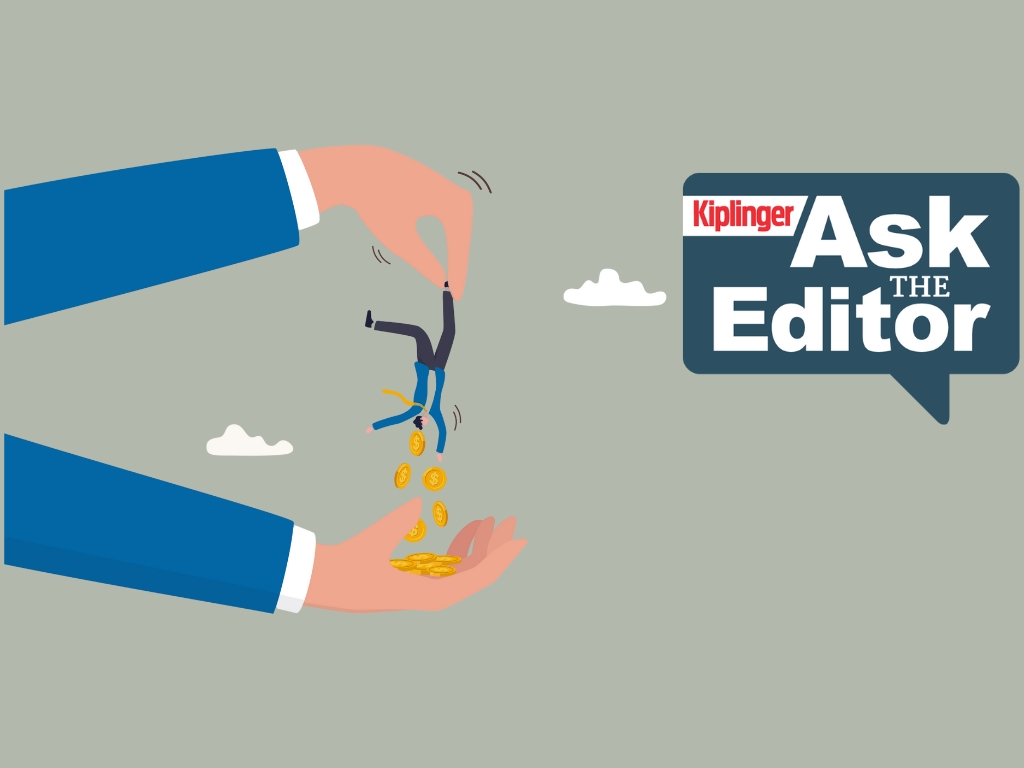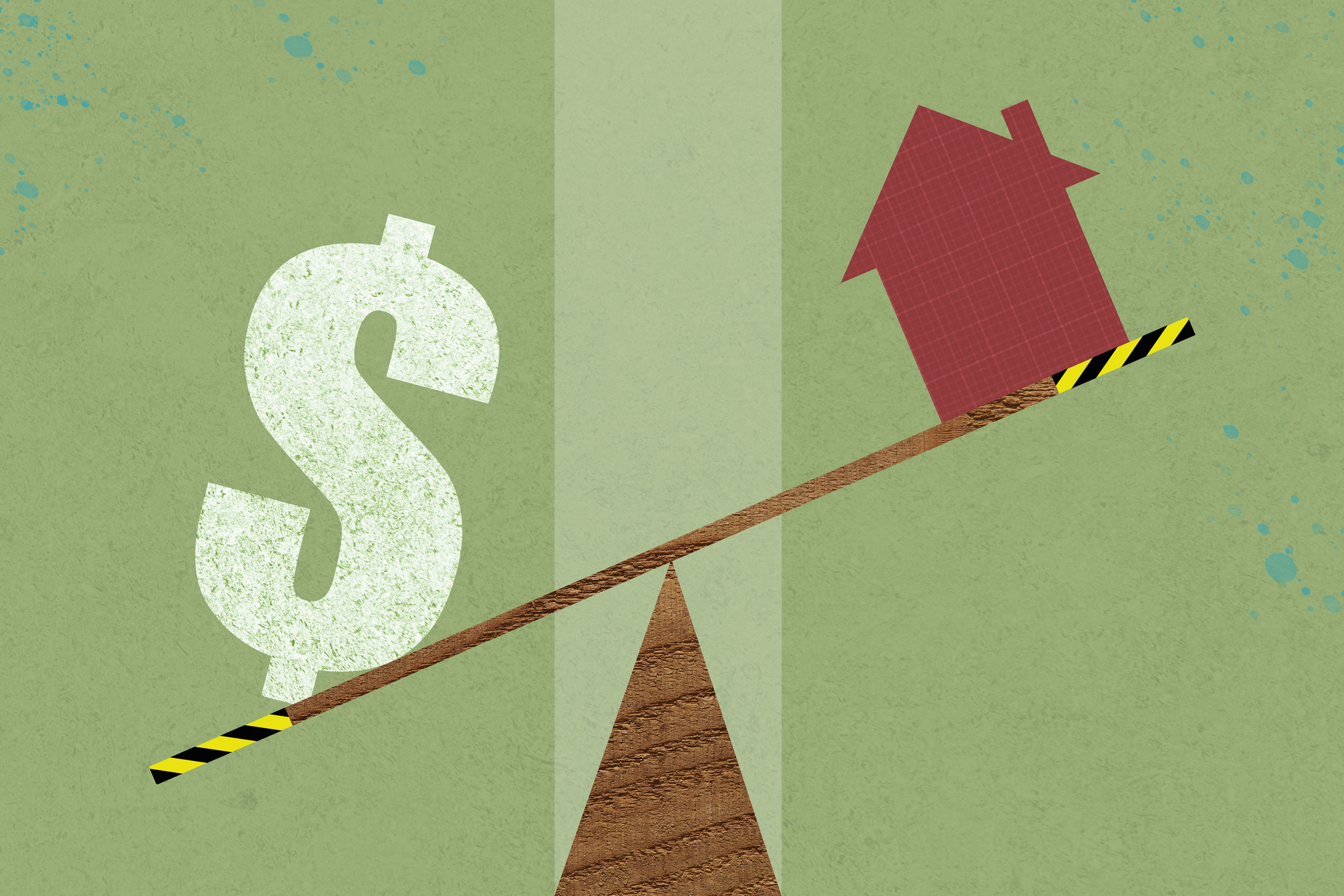Eight Ways to Stay Safe When Making Cashless Payments
Consumers are ditching cash for the convenience of digital payments, but fraudsters are right behind you. Just a few simple steps can help you stay safe.


We manage more of our financial lives through screens than ever before. We tap phones to pay for purchases and use apps instead of cash.
Digital payments are fast, convenient and arguably safer than carrying wads of cash, but with this speed and convenience comes an element of risk.
What happens when systems go down? Or, worse yet, what happens when someone breaks into the system?
From just $107.88 $24.99 for Kiplinger Personal Finance
Become a smarter, better informed investor. Subscribe from just $107.88 $24.99, plus get up to 4 Special Issues

Sign up for Kiplinger’s Free Newsletters
Profit and prosper with the best of expert advice on investing, taxes, retirement, personal finance and more - straight to your e-mail.
Profit and prosper with the best of expert advice - straight to your e-mail.
Scams, hacks and system failures continue to rise, but implementing a few smart habits can easily help you enjoy the convenience of digital payments with greater safety.
Kiplinger's Adviser Intel, formerly known as Building Wealth, is a curated network of trusted financial professionals who share expert insights on wealth building and preservation. Contributors, including fiduciary financial planners, wealth managers, CEOs and attorneys, provide actionable advice about retirement planning, estate planning, tax strategies and more. Experts are invited to contribute and do not pay to be included, so you can trust their advice is honest and valuable.
Digital payments are rising, but so is fraud
Whether you use Apple Pay at the grocery store or send money through an app to cover your share of dinner with friends, you're part of a massive shift. In 2024, more than 4.3 billion people used digital wallets worldwide. That number is expected to hit 5.8 billion by 2029.
As a result, more retailers are going cashless. Brick-and-mortar financial institutions continue to close at increasing rates as the financial world shifts toward online banking. And in places like Sweden, cash is already close to obsolete in everyday transactions.
Most Americans now use some form of digital payment. According to McKinsey’s 2024 Consumer Payments Survey, 92% of U.S. adults used digital payments last year, including mobile wallets, apps and contactless cards. That number keeps growing.
Unfortunately, fraud is growing, too. In 2024, the Federal Trade Commission reported a record $12.5 billion in consumer losses to fraud, an increase of 25% over the previous year.
Investment scams alone accounted for $5.7 billion. Identity theft, phishing and scams involving money transfer apps are becoming more frequent and more sophisticated.
Unlike a credit card, where you can dispute charges, money sent through a digital payment app is often gone for good unless the recipient returns the funds or the platform intervenes.
If you accidentally send money to the wrong person or a scammer, there's no easy way to get it back without initiating a time-consuming fraud investigation that may or may not be successful.
Eight ways to stay safe with digital payments
A few simple habits can help you enjoy the convenience of digital payments while lowering the threat of fraud.
Slow down before you send money. Whether you're paying someone for work or sending money to a friend, take an extra moment to verify their name, email address or phone number.
One wrong letter or number can send your money to a stranger, and in most cases, you won't be able to reverse the payment.
Turn on transaction alerts. Most banks and payment apps let you receive real-time notifications when money leaves your account. These alerts can help you spot fraud quickly, which is key to minimizing damage.
Use a strong lock on your phone. If your phone is lost or stolen, a fingerprint, Face ID or PIN can prevent someone from accessing your payment apps. You can also enable "remote wipe" features on Apple and Android devices, which let you erase your phone if it's gone for good.
Keep a little cash on hand. Digital payments don't always work, especially during power outages or service disruptions. A small amount of cash in your wallet ensures you won't be stuck in an emergency.
Looking for expert tips to grow and preserve your wealth? Sign up for Adviser Intel (formerly known as Building Wealth), our free, twice-weekly newsletter.
Don't click on suspicious links. Scammers can send fake texts or emails pretending to be your bank or payment provider. If you get a message asking you to "verify" a transaction or reset your password, don't click. Instead, go directly to your bank's app or official website.
Report fraud fast. If you notice a suspicious charge or lose your device (or if something simply feels "off"), contact your bank or provider right away. Most services have time limits for resolving fraud or recovering lost funds, and your own liability typically increases the longer you wait to report it.
Use two-factor authentication. This extra layer of security, usually a text message or authentication code, can prevent someone from logging into your accounts even if they have your password.
Update your devices. Software updates aren't just about new features — they often fix security vulnerabilities. Keep your phone and apps up to date to stay protected against the latest threats.
Stay in control
Technology moves quickly, and digital payments are only going to become more common. That's not a bad thing as long as you're not moving faster than your own security.
By building a few good habits now, you can stay a step ahead of fraudsters and keep your money where it belongs. Digital convenience is here to stay. Just make sure your guardrails are, too.
This article represents the opinion of Mitlin Financial Inc. It should not be construed as providing investment, legal, and/or tax advice. Investment advisory services offered through CWM, LLC, an SEC Registered Investment Advisor. Mitlin Financial is located at 140 Adams Avenue Ste. B-12 Hauppauge, NY 11788
Related Content
- The Most Common Venmo Scams — and How to Avoid Them
- 'Simple' Scam Messages May Fool Even The Most Discerning Eye — What to Know
- I've Been Scammed Twice: Here's How You Can Avoid That
- 10 Ways to Stay Safe From Grandparent Scams and Other Fraud, Courtesy of a Financial Planner
- 10 Worst Things to Keep in Your Wallet
Profit and prosper with the best of Kiplinger's advice on investing, taxes, retirement, personal finance and much more. Delivered daily. Enter your email in the box and click Sign Me Up.

Lawrence "Larry" Sprung, CFP®, CEPA®, is a husband, father, entrepreneur, award-winning adviser, author and mental health advocate. He is reshaping personal finance by fostering JOYful conversations around money. Larry founded Mitlin Financial, Inc., in 2004 with a focus on prioritizing the families they serve. The Mitlin name illustrates their culture as the firm is named in memory of Larry's wife's grandfather, Mitchell, and his mother, Linda.
-
 Original Medicare vs Medicare Advantage Quiz: Which is Right for You?
Original Medicare vs Medicare Advantage Quiz: Which is Right for You?Quiz Take this quick quiz to discover your "Medicare Personality Type" and learn whether you are a Traditionalist, or a Bundler.
-
 Ask the Editor: Capital Gains and Tax Planning
Ask the Editor: Capital Gains and Tax PlanningAsk the Editor In this week's Ask the Editor Q&A, Joy Taylor answers questions on capital gains tax rates and end-of-year tax planning
-
 Time Is Running Out to Make the Best Tax Moves for 2025
Time Is Running Out to Make the Best Tax Moves for 2025Don't wait until January — investors, including those with a high net worth, can snag big tax savings for 2025 (and 2026) with these strategies.
-
 Time Is Running Out to Make the Best Moves to Save on Your 2025 Taxes
Time Is Running Out to Make the Best Moves to Save on Your 2025 TaxesDon't wait until January — investors, including those with a high net worth, can snag big tax savings for 2025 (and 2026) with these strategies.
-
 4 Smart Ways Retirees Can Give More to Charity, From a Financial Adviser
4 Smart Ways Retirees Can Give More to Charity, From a Financial AdviserFor retirees, tax efficiency and charitable giving should go hand in hand. After all, why not maximize your gifts and minimize the amount that goes to the IRS?
-
 I'm an Insurance Pro: If You Do One Boring Task Before the End of the Year, Make It This One (It Could Save You Thousands)
I'm an Insurance Pro: If You Do One Boring Task Before the End of the Year, Make It This One (It Could Save You Thousands)Who wants to check insurance policies when there's fun to be had? Still, making sure everything is up to date (coverage and deductibles) can save you a ton.
-
 Small Caps Hit a New High on Rate-Cut Hope: Stock Market Today
Small Caps Hit a New High on Rate-Cut Hope: Stock Market TodayOdds for a December rate cut remain high after the latest batch of jobs data, which helped the Russell 2000 outperform today.
-
 Should You Tap Your Home Equity Before 2026?
Should You Tap Your Home Equity Before 2026?As borrowing rates and tax law shifts converge, here's what homeowners need to know before pulling equity out of their home.
-
 What Investors May Face in the New Year: Interview
What Investors May Face in the New Year: InterviewKeith Lerner, the chief market strategist and chief investment officer for Truist Wealth, speaks with Kiplinger.
-
 3 Year-End Tax Strategies for Retirees With $2 Million to $10 Million
3 Year-End Tax Strategies for Retirees With $2 Million to $10 MillionTo avoid the OBBB messing up your whole tax strategy, get your Roth conversions and charitable bunching done by year's end.
-
 'Politics' Is a Dirty Word for Some Financial Advisers: 3 Reasons This Financial Planner Vehemently Disagrees
'Politics' Is a Dirty Word for Some Financial Advisers: 3 Reasons This Financial Planner Vehemently DisagreesYour financial plan should be aligned with your values and your politics. If your adviser refuses to talk about them, it's time to go elsewhere.